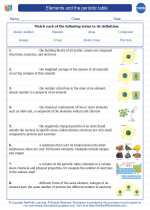Stratosphere
The stratosphere is the second layer of Earth's atmosphere, located above the troposphere and below the mesosphere. It extends from about 10 to 50 kilometers (6 to 30 miles) above Earth's surface.
Composition
The stratosphere is composed mainly of diatomic oxygen (O2) and ozone (O3) molecules. Ozone is concentrated in a region known as the ozone layer, which plays a crucial role in absorbing the majority of the Sun's harmful ultraviolet (UV) radiation.
Characteristics
- Temperature: In the lower stratosphere, the temperature generally increases with altitude due to the presence of the ozone layer. This temperature pattern is opposite to that of the troposphere.
- Stratospheric Winds: The stratosphere is characterized by strong, steady winds known as the polar vortex and the subtropical jet stream. These winds play a role in redistributing heat and influencing weather patterns.
- Stable Atmosphere: The stratosphere is relatively stable and experiences minimal vertical mixing compared to the troposphere. As a result, it is often free of clouds and associated weather phenomena.
Importance
The stratosphere plays a critical role in protecting life on Earth by absorbing and filtering out a significant portion of the Sun's harmful UV radiation. Additionally, it influences global climate patterns and atmospheric circulation through its interactions with the troposphere and mesosphere.
Human Impacts
Human activities, particularly the release of certain chemicals called chlorofluorocarbons (CFCs) and halons, have led to the depletion of the ozone layer in the stratosphere. This has resulted in the formation of the ozone hole, particularly over Antarctica, leading to concerns about increased UV radiation reaching the Earth's surface.
Study Tips
When studying the stratosphere, it's important to understand the composition and role of ozone, the temperature profile, and the impact of human activities on the ozone layer. It's also helpful to learn about the stratospheric winds and their influence on weather patterns.
Consider creating visual aids such as diagrams or charts to help illustrate the key concepts and relationships within the stratosphere. Additionally, practicing sample questions related to the stratosphere can help reinforce your understanding of the topic.
[Stratosphere] Related Worksheets and Study Guides:
.◂Chemistry Worksheets and Study Guides High School. Elements and the periodic table

 Worksheet/Answer key
Worksheet/Answer key
 Worksheet/Answer key
Worksheet/Answer key
 Vocabulary/Answer key
Vocabulary/Answer key
 Vocabulary/Answer key
Vocabulary/Answer key
 Vocabulary/Answer key
Vocabulary/Answer key
